Producer Koji “IGA” Igarashi and director Shutaro Iida posted a video last night (7 1/2 minutes) to their Youtube channel looking back on the game’s creation, starting from its Kickstarter announcement and their many stretch goals, and the game’s planning and development.
Tag: castlevania
Romancelvania
Indie Games Plus’s Joel Couture, who’s kind of a friend of the blog, reviewed this silly exploratory platformer/horror game/dating sim. They admit that they’re running a campaign to promote it, but that it doesn’t affect their review. I believe them, because the premise is way too ridiculous and charming to pass up. I can assure you that I have no connection with them! It’s on the PS Store, the Xbox Store (if that’s what it’s called, I’m fuzzy on it), the Epic Store, and Steam, which is a store but doesn’t include the word store in its name. They say It’ll be in the Switch eStore eShop later on.

You can choose to play either a male or female Dracula. I don’t see signs of a gender ambiguous version, but we are talking about a vampire here, they’re kind of notorious in popular culture for not caring a lot about what their partner’s sex or gender is. There’s 12 monsters across two genders and lots of species. Hey, it’s got Cthulhu in a dress!

Admittedly there’s lots of games that don’t live up to a great premise. The memory of the $4 I wasted on Animal Fight Club still sticks in my craw. The Steam reviews are mostly positive, with some people complaining of jank and some implementation issues, so you should know about that going in. But it’s only been out a week so far, so it’s likely to improve in the coming months. It’s up to you if you want to jump the gun now or wait to see if it gets better, but its presentation is charming already, tastefully sexy and playful without being raunchy. I can appreciate that!
Romancelvania (Indie Games Plus review – PS – Xbox – Epic – Steam)
Nintendo Direct 2/8/23
Thursdays here at the moment are the domain of Edit the Frog, so we put off our overview of the Nintendo Direct until today.
While most sites have already regurgitated the news into your waiting beaks, this time we’re recounting the release dates chronologically, so you’ll know what order to expect everything. Specific games of possible interest to a hazy mirage that I imagine to be our readers are in bold:
FEBRUARY
8th: Nintendo Switch Online Gameboy & GBA Support, Fire Emblem Engage Expansion Pass, Metroid Prime Remastered
15th: Xenoblade Chronicles 3 Expansion Pass DLC volume 3
22nd: Metroid Prime Remastered on cartridge
24th: Octopath Traveler II, Kirby’s Return to Dreamland Deluxe
MARCH
6th: Dead Cells Return to Castlevania DLC
17th: Bayonetta Origins: Cereza and the Lost Demon
20th: Spring begins. Releases for Spring: Splatoon 3 Expansion Pass, Mario Kart 8 Deluxe DLC Wave 4,
APRIL
11th: Tron: Identity
21st: Advance Wars 1+2 Re-Boot Camp
27th: Omega Strike
MAY
12th: The Legend of Zelda: Tears of the Kingdom
JUNE
Some time in June: Harmony: Fall of Reverie
1st: Etrian Odyssey Origins Collection
2nd: We Love Katamari REROLL + Royal Reverie (what is it with the word “reverie” this month?)
21st: Summer begins. Releases for Summer: New Samba de Amigo, Ghost Trick: Phantom Detective, Baten Kaitos I & II HD Remaster
JULY
21st: Pikmin 4
28th: Disney Illusion Island
AUGUST
29th: Sea of Stars
Some time in 2023: Fashion Dreamer, Decapolice, Fantasy Life i: The Girl Who Steals Time, Professor Layton and the New World of Steam
Romhack Thursday: Simon Belmont in 8 Eyes

On Romhack Thursdays, we bring you interesting finds from the world of game modifications.
There aren’t many game series with the reputation that Castlevania has. While it’s always been very popular, the stature of the original game has only grown over the years, and it’s now seen as one of the very best games on the NES. We’ve talked about it here before, and about how badly the creator of one of the best-designed games ever made was treated by his company, but we’re not here to talk about sad things today.
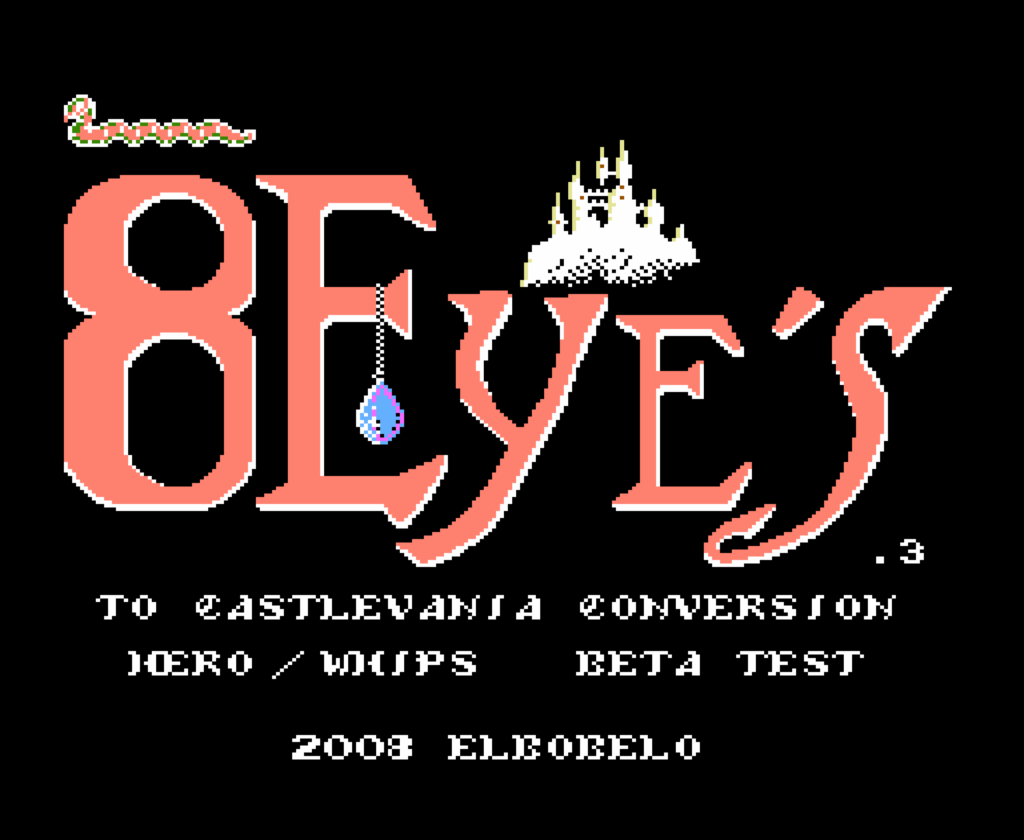
You’d think Castlevania would have more imitators, but there aren’t as many as you’d think there would be? It has specific and definite ideas, some of them not obvious to a random player. Simon moves slowly and jumps stiffly, but it’s clear with repeated play that not only is the game designed around this, it’s even a better game for it! It’s a good example of how reducing a player’s abilities, relative to Mario-standard, can actually result in better play.
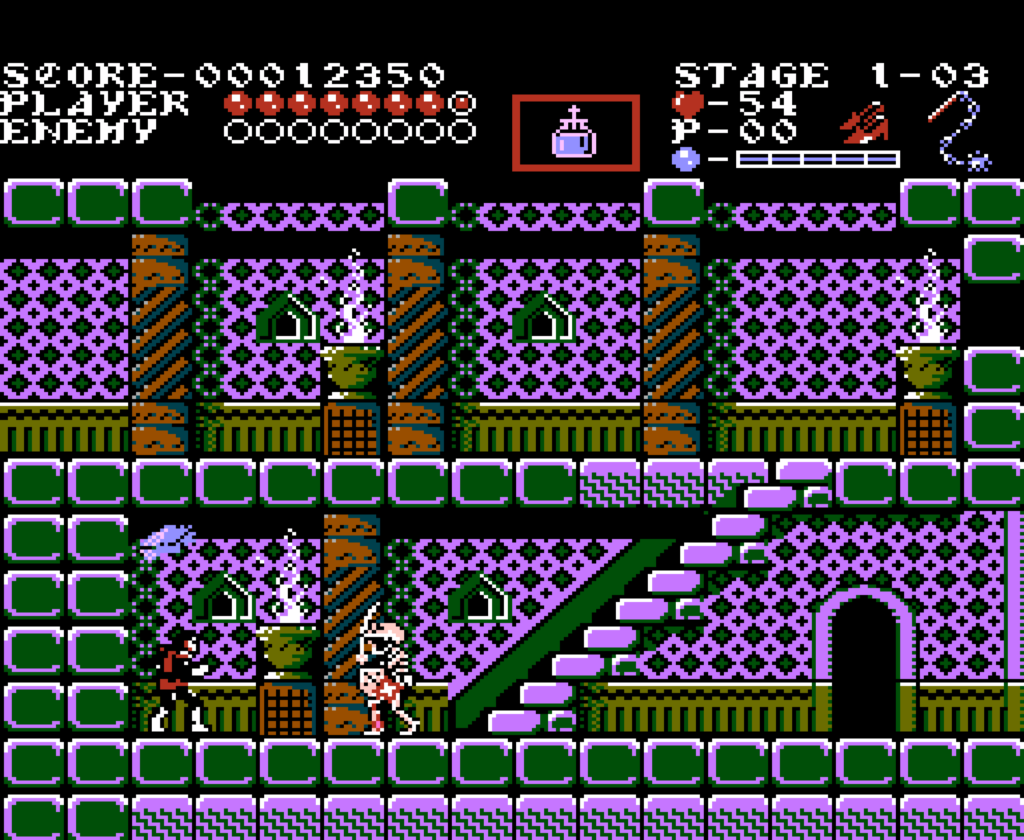
One of the few definite Castlevania clones that come to mind is Thinking Rabbit’s 8 Eyes. It could not be more obvious while playing it that its designer played a lot of Castlevania; its hero Orin’s movement is nearly an exact match for Simon Belmont, and it even has staircases that he can climb and hidden items buried in the walls.
It’s not as good a game as Castlevania, definitely, but it has its own ideas, and I respect it for adding some unique features. The player can determine what order the first eight levels are played in, and every time they finish one their attack power is upgraded. It has devious level designs that don’t always map cleanly on paper. It has a player-controlled drone character in the form of a falcon that can be deployed, and then flies around on its own, and can be commanded to attack and return and even has its own health. Most interesting of all, every level has hidden with it a clue, a piece of text that must be found and used at the end of the game to solve a logic puzzle to finally win.
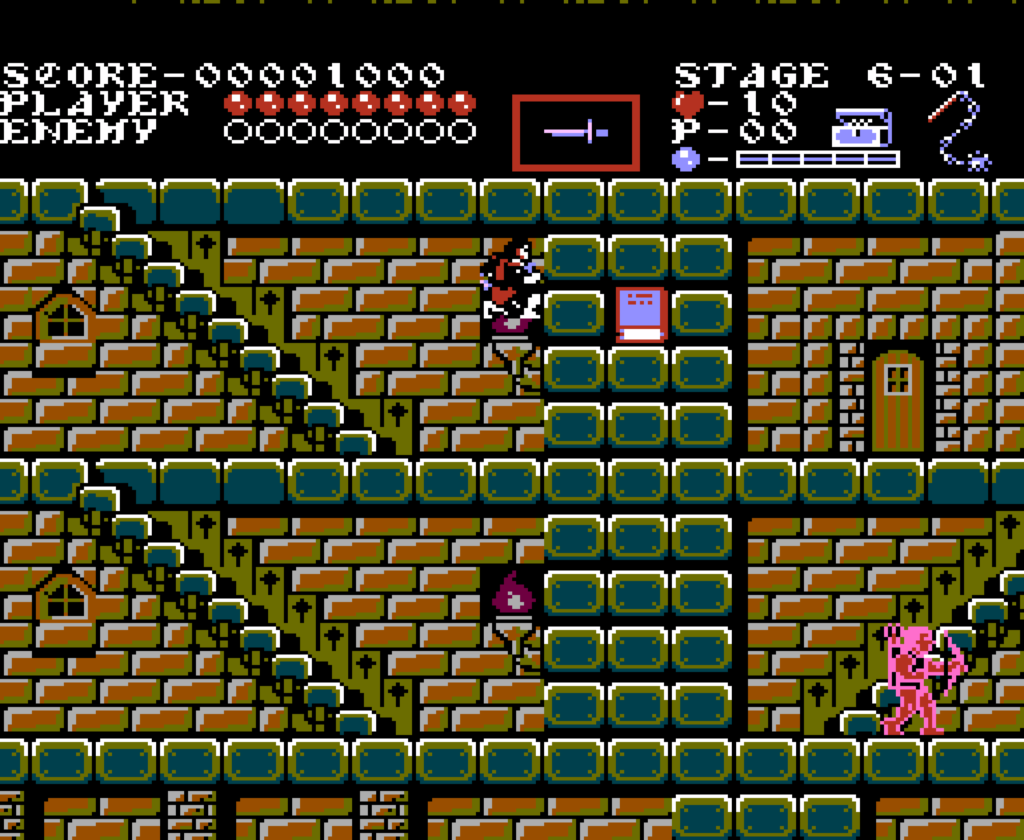
There’s a lot of cool ideas in 8 Eyes. If it had some more design and development work put into it it could have been seen as a later highlight of the system. elbobelo has, for over fourteen years, been at work on a huge hack to put Simon Belmont into the game. In a forum thread they started long ago they mentioned that, while work has slowed, it’s still going. They haven’t issued a public release since an old beta in 2008, but there’s enough present in it to make one wonder how it’ll play when it’s finally released.
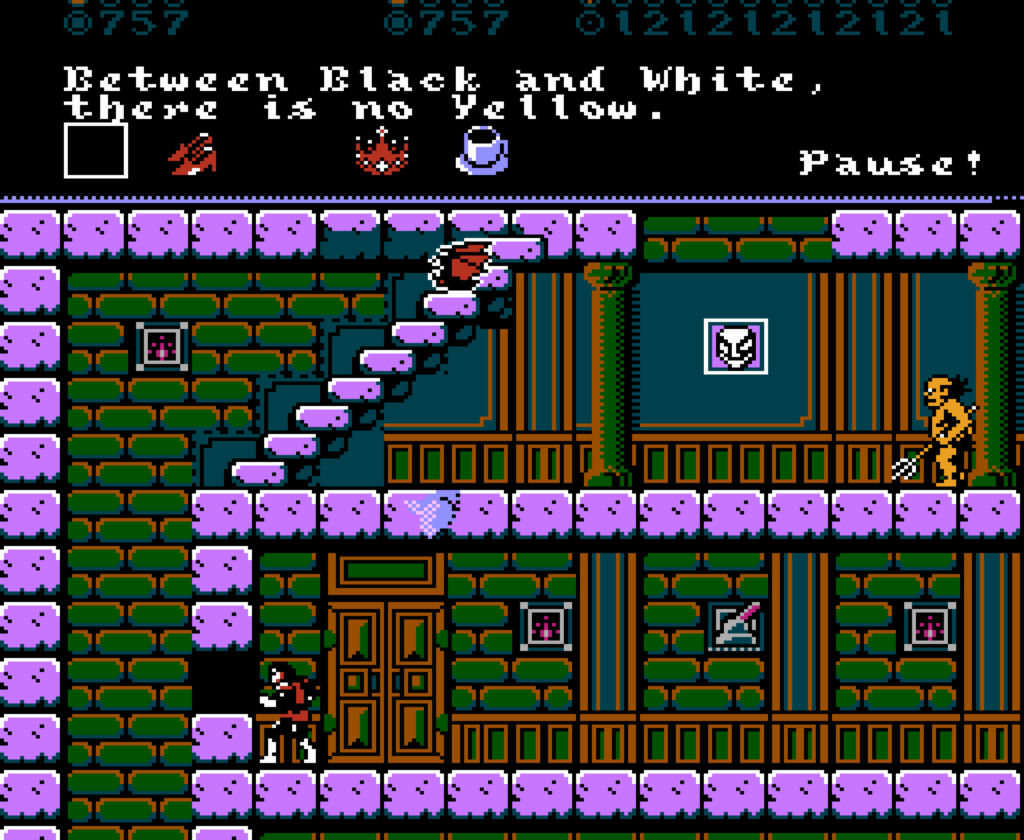
Fortunately, the 2008 version of the hack keeps the cool ideas that 8 Eyes contributed, and it just adds features from Castlevania I and II. It keeps the falcon, the diabolical levels, and the clues and game-ending logic puzzle. Gone, however, is the player’s sword, replaced with Simon’s whip, which is a vast improvement. In addition to the falcon, Simon can find his usual subweapons, which don’t replace each other but can be switched between with the Select button. It doesn’t make the game too easy because 8 Eyes was a very difficult game. It just makes the challenge more reasonable.
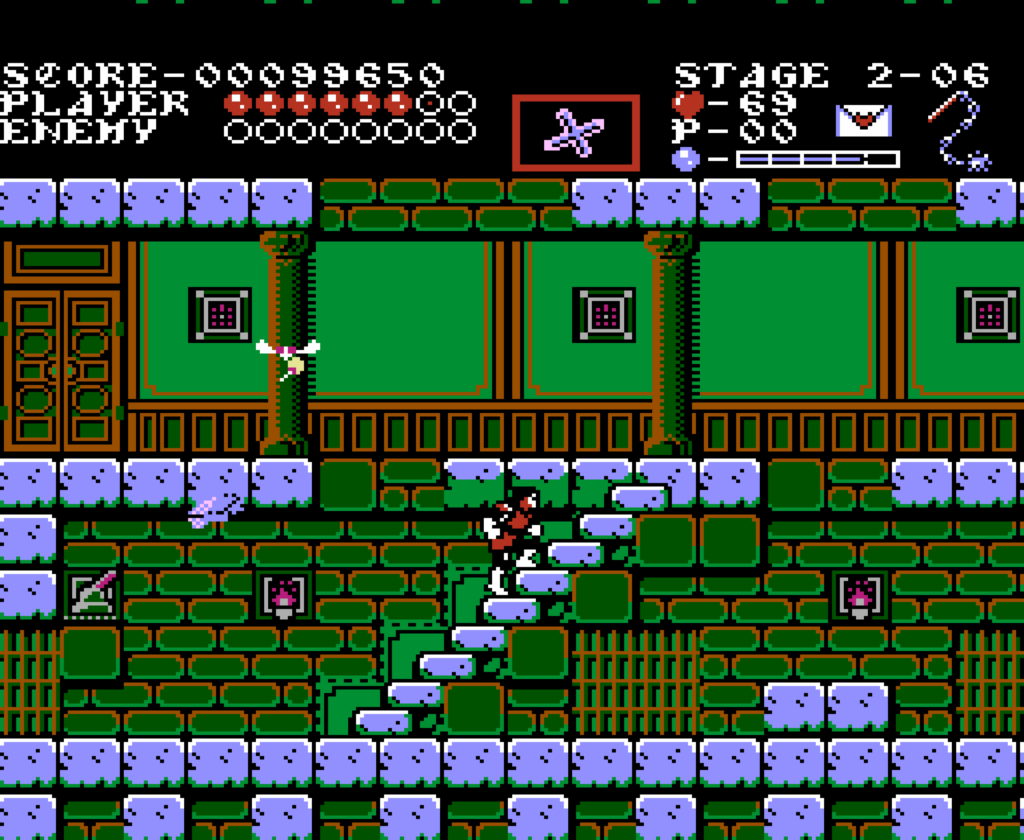
Best of all, it also keeps 8 Eyes’ weirdest aspect: after you beat each boss, you sit down and have tea with them! In the original the tea was brought by one of the boss’s flunkies, but in this hack one of the skeleton enemies brings it in. It’s surprisingly adorable!
8 Eyes – Playing as Simon Belmont (romhacking.net)
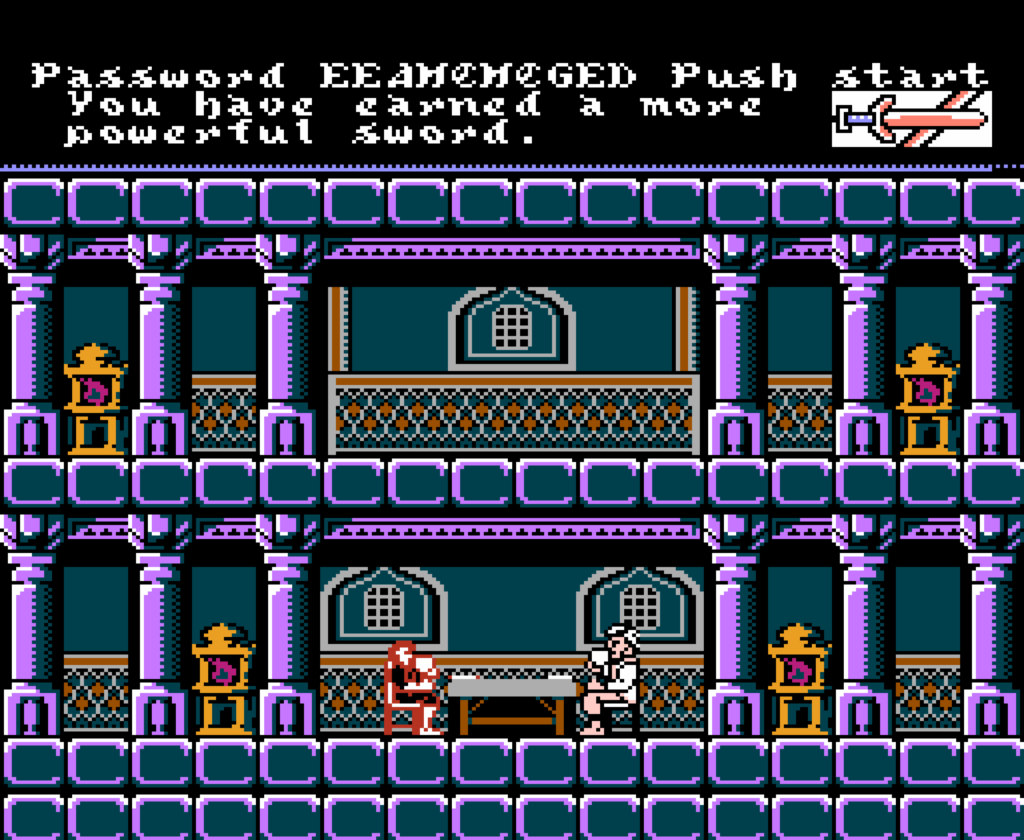
News 2/2/2022: Konami, Link to the Past, Listicles

“We scour the Earth web for indie, retro, and niche gaming news so you don’t have to, drebnar!” – your faithful reporter
My cell walls are feeling kind of rigid at the moment due to a computer issue that caused me to lose the first draft of this post. All of my witty remarks, lost to the electronic void. You missed out on my entertaining usage of the phrase “odoriferous blorpy.” Truly we are in the worst timeline. It’s all left me feeling kind of cranky, let’s get through it quickly this week.
Ted Litchfield at PC Gamer on a RuneScape player playing a minigame for eight years and turn turning in all his progress at once. RuneScape is an early MMORPG that began in 2001.
Several things to do with Konami, a once-great publisher that’s become pretty hidebound lately:
Dustin Bailey at GamesRadar: fans are working on a PC remake of Castlevania II: Simon’s Quest. I’m sure this won’t get obliterated by legal threats. They should have gone with the cheeky route taken by The Transylvania Adventure of Simon Quest. The article mentions that its creators consider the fact that many townsfolk lie to you to be a problem, instead of awesome as it really is.
Charles Harte at Gamespot organ Game Informer says Dead Cells’ upcoming Castlevania-themed DLC is really big.
Also from Charles Harte, Konami is shutting down their recently-released game CRIMESIGHT, not just removing it from the Steam store but even making it unplayable. Great way to reward people giving you money, K. It’s not even a year old yet!:
Tyler Wilde, also from PC Gamer, on a $2,000 game on Steam and what it’s about. Summarized: it costs $2,000 but is short enough that people can finish it within the return period, and it amounts to a screed against women. Blech!
Dean Howell at Neowin: a fan-made decompilation of The Legend of Zelda: A Link to the Past can now be compiled for Windows and (presumably if your device is jailbroken) Switch.
Christ Moyse at Destructoid tells us that Taito’s classic The New Zealand Story is coming to the Arcade Archives series. Gandalf could not be reached at press time for comment.
Two listicles:
Zoey Handley at Destructoid on the 10 best NES soundtracks. The list is Bucky O’Hare, Kirby’s Adventure, Castlevania 3 (Japanese version), Contra, Dr. Mario, Super Mario Bros. 2, Mega Man 2, Castlevania II, Journey to Silius, and… Silver Surfer?
Gavin Lane and the NintendoLife staff on the 50 best SNES games. The list is compiled algorithmically from reader scores, and can change even after publication. At this time, the top ten are, starting from $10: Donkey Kong Country 2, Earthbound, Teenage Mutant Ninja Turtles IV, Super Mario RPG, Yoshi’s Island, Final Fantasy III, Super Metroid, Chrono Trigger, Zelda: A Link to the Past and Super Mario World on top.
Tom Phillips at EuroGamer mentions that the original developers of Goldeneye 007, recently rereleased after 25 years on Switch and Xbox platforms, were a bit miffed that they weren’t asked to participate in the festivities. At the time most of its developers were completely new to the game industry, and they’ve been generally snubbed by its publishers in talking about the new versions. Does feel pretty shabby, Nintendo and Microsoft!
Andrew Liezewski at Gizmodo talks about the graphics in an upcoming Mario 64 hack made by Kaze Emanuar. I’ve followed Kaze’s hacking videos quite a bit (I think one’s been posted on Set Side B before), and the optimizations they’ve made to Mario 64’s engine are amazing, not only eliminating lag but great increasing its frame rate and making it look better to boot.
And, at Kotaku, Isaiah Colbert reports on various things being done to celebrate Final Fantasy VII’s 26th birthday, including official recognition in Japan of “Final Fantasy VII day” and a crossover with Power Wash Simulator. Maybe they can do something about cleaning out all the grunge from Midgar, that city could use a bath.
The Castlevaia Scroll Glitch
Castlevania is an old and much-examined game, but its world records have been moving again lately, due to the use of a very interesting glitch that takes advantage of the way it updates its screen in the invisible area outside the display’s area. The above video demonstrates this to remove a lengthy walking section from the fifth “block” of the game, and explains how it was done too. What follows is a text re-explanation of some of it.
Most NES games don’t update the display all at once, but take advantage of the fact that the system has a whole screen’s worth of area outside of the visible region to draw tiles into before they become visible. The NES doesn’t allow direct writing to PPU memory, so there’s only a small window of time in each frame in which screen tiles can be changed anyway.
Castlevania uses a system where, on specific frames, a block is drawn on the side of the screen the player is moving towards, in sequence, starting from the top and moving down on successive frames. It does this seven times, and repeatedly, for each column of tiles the player is moving towards.
However, it doesn’t reset the vertical column progress if the player changes direction! If the player instead moves backwards a small amount at a specific place, it’ll update the column on the other side of the screen instead, leaving the old data in the column the player had been moving towards.
Since multiple redundant passes are made, the player has to do this two or three times as they progress. It’s exacting, but if done correctly, they can cause arbitrary blocks of tiles to be left on-screen from whatever had been in video memory before.
When the player’s character climbs stairs, the game watches for ground tiles as a signal to exit climbing mode and resume walking. If there is no ground there, because it was never drawn there because of this glitch, then the character will continue climbing, up through the air, even through screen transitions, even through floors, until they reach the next bit of ground they can stand on.
Here’s the Reddit post that marked the first time this glitch was done in a non-TAS record. And here’s a Youtube video demonstrating its use in the last level to remove the wall that requires the player to descend into bird-and-fleaman hell before reaching the final door.
Romhack Thursday: Castlevania II Retranslated & Improved

On Romhack Thursdays, we bring you interesting finds from the world of game modifications.
Castlevania II is an infamous entry in the series. While it’s the first Castlevania game to use the “Metroidvania” structure that would be more solidly associated with it after Symphony of the Night, there were a lot of… controversial elements? Townsfolk often lied to the player (in all versions of the game), and sometimes their hints were badly translated. A few places required the player to do arbitrary things without much prompting to proceed. And there were the timed scene transitions, between day and night, which some people have (rather unfairly I think) fixated upon as a major flaw.
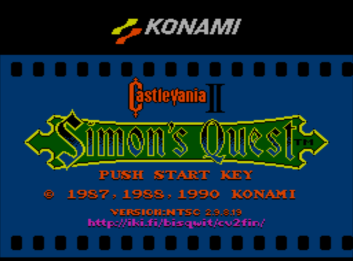
There’s more. The Japanese version of the game came with a map of the countryside that was left out of the U.S. release, meaning, some locations in the game were not even given names that a player could discover in the game, which in a couple of places required them to guess which location was meant by a clue.
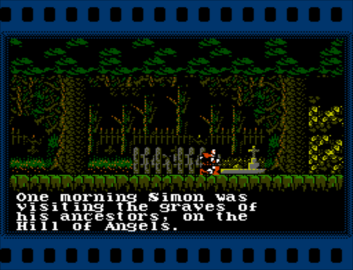
To the rescue of a player trying to appreciate this game now comes Bisqwit, a.k.a. Joel Yliluoma, and his Castlevania II Retranslation project. It doesn’t remove the townspeople telling incorrect things (which was intended by the developers-why should a random villager happen to know for certain anything to do with destroying Dracula?), but it does make their hints more comprehensible, remove the reliance on guidebooks and FAQs that have interfered with the efforts of many to enjoy the game, and it greatly speeds the transitions between day and night. It even offers an animated prologue (wait from the title screen) and an in-game map, based on the one in the Japanese manual, to lend context to the player’s explorations.
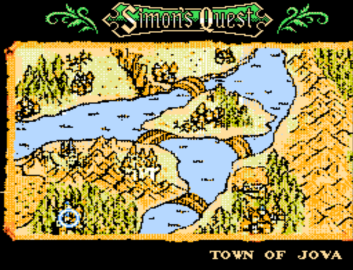
There are plenty of other new features too, such as an end-game report that gives your win time and SRAM-based (battery-backed) save games. Some of the new features require better hardware than the original game had, which may limit what devices can run it, so Bisqwit thoughtfully provides a website that allows the player to customize the modification to their liking. Go there, choose the options you want (which includes language – if the site isn’t in English click the button to the left) then click the Download button to get a version with features set to your requirements and/or liking.
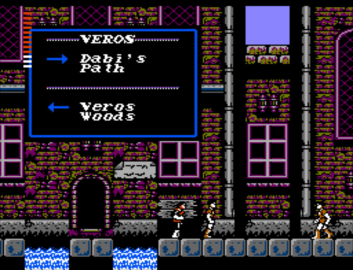
Lots of romhacks seem superfluous relative to the original game, but Bisqwit’s translation patches substantively improve upon the original game in many ways. It really is the best way to experience Castlevania II. If you’ve played it before you should give it a try; if you haven’t, I strongly suggest playing this version, instead of having to suffering through the original’s quirks. At the very least you it’ll mean won’t end up having to resort hunting up a thirty-five-year-old FAQ before the end.
And if you like the patch, why not have a look at Bisqwit’s Youtube channel, which has a lot of interesting technical content on it, much of it unrelated to video games?
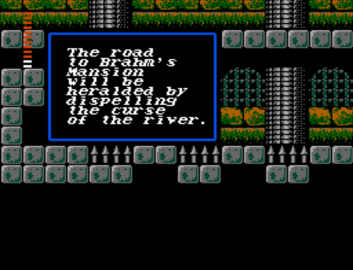
Arcade Mermaid: Vs. Castlevania
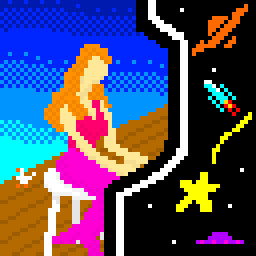
Arcade Mermaid is our classic arcade weirdness and obscurity column! Frequently (no promises) we aim to bring you an interesting and odd arcade game to wonder at.
You are reading the words of a Castlevania fanatic. Your standard fan who came into the series with the Igavanias will tell you its pinnacles are Symphony of the Night or, if they’re really trying to impress, Rondo of Blood. Truthfully, both of those are fine games. But I am of the opinion that the best the series has ever been was the first and third Famicom/NES games, and that series creator Hitoshi Akamatsu got a raw deal. The first game particularly is an especially brilliant gem among the jewels of the early Famicom’s library. Every moment of it shows care and attention to detail.
Just a few examples. While many people curse the stream of Medusa Heads that harry Simon Belmont at several places in the game, the game is actually quite sparing with their use, easing up with them at certain telling moments. One particular place this happens is climbing the staircases in the second stage of Block 3: while you’re on the staircases there, interestingly, the Medusa Heads don’t attack.
Also, the Fish Men in the first and fourth blocks, on the first loop, are kind enough never to jump from beneath the player’s location. And while on the second and later loops through the game they will happily emerge right beneath your feet and bump you into the water, there is a tell even for this: except for a brief section where there are no candles, Fish Men only emerge from the water directly beneath candle locations. (I gained a small amount of internet notoriety when an online friend pointed out where I had observed this fact in a Metafilter thread.)
I could go on, and will for a few more sentences, even though this kind of stuff makes for boring writing. The subweapons are very precisely designed, each filling a specific role in the game. All of the game’s platforms are supported by background elements, and when the player climbs stairs to a new area, background pillars in the upper area mostly line up with those from the lower area. You can see the crumbling spire that’s the site of the Dracula fight far in the background in block 3, half of the game before you get to climb up there yourself, and it’s such an iconic piece of level design that almost every Castlevania game that follows includes it. Much of its brilliance is recounted by Jeremy Parish in his book on the NES Castlevania games. (An earlier version of the Castlevania material can be seen linked here on the Internet Archive, but please consider his book if you are able to buy it.)
All of this is just preamble though, to the true subject of this post: the port for Nintendo’s Unisystem arcade hardware, Vs. Castlevania.
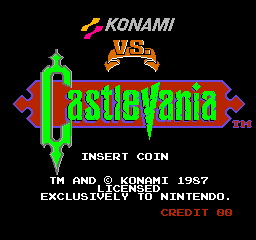
Castlevania is renowned as a tough game. While it only has six “blocks,” broken down into 19 stages, the game ramps up in difficulty pretty quickly through that thin territory. I’ve played through it all dozens of times. I’ve completed the game on one life before, but I still find the last level challenging. Even so, I’ve rolled both the score counter and stage counter. I’m good at Castlevania, not speedrunner-level, but, no offense intended to those who are, I have other things that I have to do. I cannot devote huge blocks of time to mastering individual games like I could as a teenager.
If you enjoy the original Castlevania, you might want to have a look at the Vs. variant, which is available via the Arcade Archives series for current consoles. Especially if you count yourself a master at it, this version will probably put you in your place.
In terms of hardware, the Unisystem is very close to a NES, and Vs. Castlevania doesn’t use any tricks that its home version doesn’t. Here is video of me playing through the first level:
People familiar with the original will notice that the game looks slightly different. The colors are different, which is something that was frequently the case of the arcade versions of NES software. It’s likely that the Unisystem’s hardware is responsible for this: as a protection against bootlegging, which was rife in the arcade industry, each Unisystem arcade board had, in addition to the ROMs with the code for each game, a specific, custom PPU chip with the palette for that game embedded within it. People who copied the ROM chips into EPROMs in order to run a game without buying it from Nintendo would have something that could technically run, but the palette would be for the original game, not the copied one, and make the colors look funny. While I don’t know if this is true for Vs. Castlevania, it might explain the difference if the whole game had to use a single palette set.
Two major differences between Vs. Castlevania and its home version are immediately evident. One, in the first level enemies do four bars of damage on each hit to protagonist Simon Belmont. The first couple of levels of NES Castlevania are mostly just a warmup. Enemies in both blocks only do two bars of damage, meaning even without health powerups Simon can take seven hits without dying. The increased damage is the same as on the game’s second loop, after finishing the whole thing and starting from the beginning. The arcade sensibility, to keep players putting in money in order to learn the game and see its later stages, means it doesn’t have time to let the player acclimate themselves to its heated waters. The fire is lit; the soup is boiling.
Even worse though is that, for each of the first three blocks of the game, the player only has 170 seconds to finish. It’s quite a shock if you’re used to the original, where time is practically never an issue! Even if you’ve mastered the levels on the NES, you’ll find, if you don’t constantly work towards reaching the door of each stage, you will easily run out of time. Expect the warning alarm to be ringing through the boss fights until you get used to the constant progress the game demands.
I don’t know what it is about the later blocks, but they have much more generous time limits, along the lines of the NES version. For these levels, the challenge goes back to surviving enemy attacks. Starting with Block 3, the game increases the damage done by enemies to levels never seen in the NES game even at its hardest: six bars, enough to kill Simon in just three hits. This makes Dracula at the end of the game quite a challenge.
If you manage to loop the game, you get to see something quite amazing. Desperate to end the player’s credit now, the game increases the damage done by enemies to eight bars, killing Simon Belmont in just two hits. More than that, the game pulls off the stops with nuisance enemies. You even have to face bats in the outside area before entering the castle! Take a look at this:
The extra nuisance enemies are an especially interesting addition, since NES Castlevania never uses so many, even on the second loop and beyond. It’s exactly the kind of ludicrous challenge that people who have mastered the original game should seek out!
Castlevania is not the only Vs. game with substantial differences from the arcade version. Vs. Excitebike has many niceties over the home version, including some clever bonus stages. Vs. Balloon Fight in the arcade is a vertically-scrolling game, that played with two players gives each its own monitor. There’s lots mot to say about these games, but I’ve got to save some material for later.
Link Roundup 5/12/22

“We scour the Earth web for indie, retro, and niche gaming news so you don’t have to, drebnar!” – your faithful reporter
Greetings to all humans down there on planet Glorb-III, also known as Earth. Let’s get started, drebnar!
A lament from Reddit on how Streetpasses are impossible to get now. If only Nintendo had thought to include them on the Switch. Probably it’ll take another ten years before they realize what a good idea they had.
Chris Moyse from Destructoid tells us this week’s Arcade Archives release is Taito’s Fighting Hawk!
Kate Gray from Nintendo Life writes about the thing that all video game journalists are someday destined by fate to write about: Earthbound. It’ll happen here too someday, you can rely upon it. And Alana Hauges frpm Nintendo Life has some words to say about its sequel Mother 3!
From Polygon, Michael McWhertor enthuses about how great is the new Teenage Mutant Ninja Turtles game, Shredder’s Revenge.
Chris Friberg of Den of Geek tells us his picks for the 15 best NES RPGs. #1 is Dragon Quest III! (What do you mean, don’t spoil it? I’m an alien, I spoil everything drebnar!) He also ranks Wizardry pretty high, he has great taste!
Over on Hackaday, Robin Kearey tell us about a reimplementation of the classic Tamagotchi using modern hardware!
Blake Johnson of CBR.com asks if a collection of the DS Castlevania games could ever be released? While the fan favorite remains Symphony of the Night, the DS games are excellent and retain many of its greatest elements.
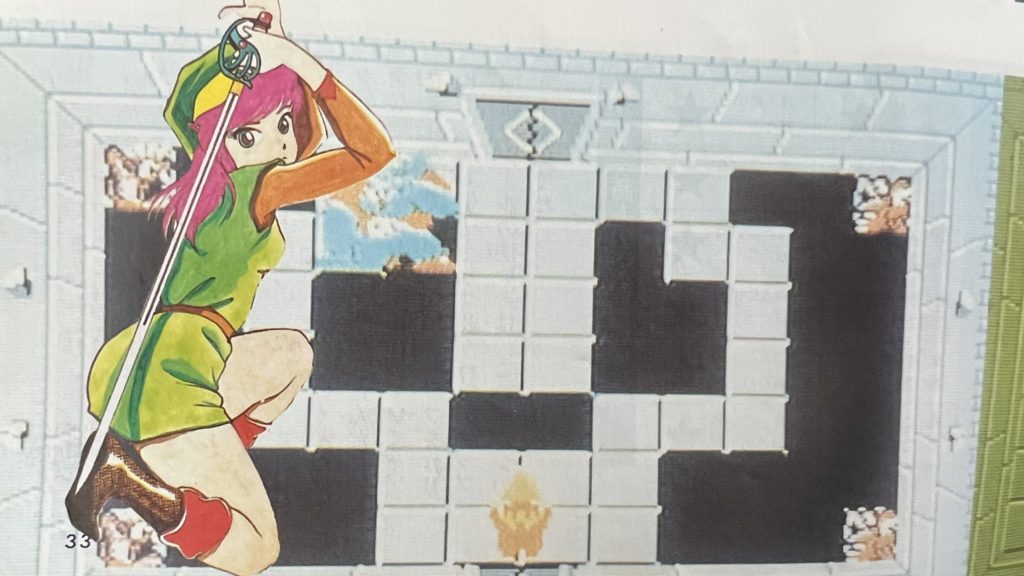
Go Nintendo’s rawmeatcowboy points to the discovered female Link art from Japanese guidebooks that History of Hyrule uncovered! Hey, that image looks familiar! Meanwhile, comicbook.com’s Connor Casey tells us that professional wrestlers Steve Austin and Cody Rhodes disagree as to which is the best Legend of Zelda game, respectively, Breath of the Wild or Ocarina of Time. This may be the only time in my entire life that I’ve agreed with the opinion of earthling Steve Austin, although admittedly I’m a unicellular organism filled with an iridescent goo.
And Jules Wang at Android Police tells us that Chromebooks should be getting better Android support later, improving their game-playing experience. Between that and Steam Support, who needs a Steam Deck? (Answer: ME I DO YES I WANT ONE PLEASE SEND IT TO MEEEEEE)
Link Roundup 5/3/2022

“We scour the Earth web for indie, retro, and niche gaming news so you don’t have to, drebnar!” – your faithful reporter
Bryan of Nintendo Everything brings us the words of the Mother 3 producer who thinks they know why it’s not been released in English: it has to do with the difficulty in bringing the special qualities of Shigesato Itoi’s prose to a language other than Japanese.
Gabe Gurwin of Gamespot thinks he knows why the Castlevania game reboot failed: the first one fit into the prior story but “frustrated” fans a bit, but the second one sucked. Eh.
Tom Nardi of hackaday brings us the experiences and pictures of Vintage Computer Festival East 2022.
One entire internet has been posting about Ocarina of Time remade in Unreal Engine with a 60fps frame rate. I am told that I should at least acknowledge this. I do so with Marc Deschamps’s mention on comicbook.com. It mentions the fact that Sora from Kingdom Hearts is playable.
Slightly more heartening is a report from Joseph Luster, writing for Crunchyroll, that two tactics games set in the R-Type universe are being remade.
Isaiah Colbert on Kotaku brings us news of Twitch’s plans for improving profits from streaming. Hint: they involve reducing the cut that streamers receive and even more ads! All problems solved! The streamers themselves don’t appear to be thrilled.
Tyler Fischer for comicbook tells us Square Enix plans of reviving the Fear Effect series.
And Lowell Bell on NintendoLife uses speculation about bringing them to Switch as their excuse to mention ten Western RPGs: Ultima (why only the original?), Diablo (it’s already got Diablos 2 and 3), Fallout (Wasteland 2 is there), Might & Magic VI (bring us Xeen!), Deus Ex, Morrowind, Vampire: The Masquerade Bloodlines, Neverwinter Nights 2, Dragon Age: Origins and Witcher II.
Link Roundup 5/1/22

“We scour the Earth web for indie, retro, and niche gaming news so you don’t have to, drebnar drebnar!” – your faithful reporter
Late submissions for juried independent game festival Indiecade are open until May 15th.
C.J. Wheeler for Rock Paper Shotgun: Perfect World Entertainment absorbed by Gearbox Publishing.
Mitchell Clark for The Verge tells us that Apple claims right to remove software from App Store if they aren’t downloaded recently.
Brian of Nintendo Everything reports that Aspyr is open to ports of Star Wars: Rogue Squadron, including unreleased Wii versions. The source is this tweet.
“Dreadknux” of Sonic Stadium writes of fan art that adds the movies’ Agent Stone to images stills of other Sonic properties.
Brendan Hesse of Gamespot, speaking for site staff, offers a ranking of 14 Final Fantasy games. From worst to first, the ranking, all according to original Japanese numbering and not including the MMORPGs:
2 < 15 < 13 < 3 < 1 < 9 < 4 < 8 < 7 < 5 < 7 Remake < 10 < 12 Zodiac Age < 6
This is a little towards the technical end of things, but Sudden Desu on Twitter has created a framework for developing Mega CD (a.k.a. Sega CD) games, available from GitHub.
I’ve seen it elsewhere, but I’m linking to Eric Van Allen’s report for Destructoid, on Disney Dreamlight Valley, a lifesim with Disney IP. I’m imagining it as being like Animal Crossing, but with Disney characters. Do you know how annoying a neighbor Tigger would be?
Dennis Payne of Gaming On Linux tells us of a Dungeon Crawler Jam hosted by dungeoncrawlers.org, with some interesting output!
Ian Walker of Kotaku tells us of a mod for Final Fantasy VII Remake that brings Yoshitaka Amano-like designs to the generally un-Yoshitaka-Amano-like Barrett!
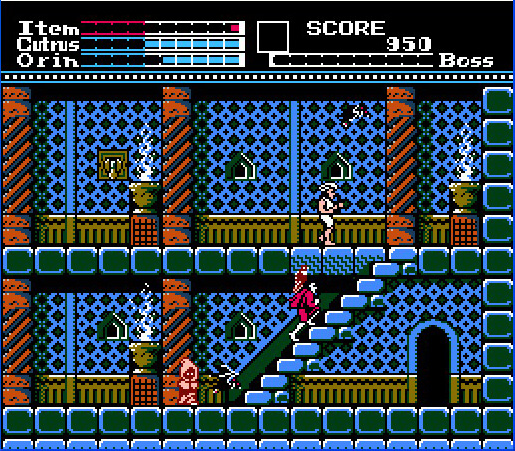
Alex Donaldson of VG247 snidely and suitably mocks the Denuvo DRM in the upcoming Sonic Origins for protecting the digital virtue of the original Sonic games, which have long been widely traded on the web.
Adam Conway at XDA lets us know of Skyway, a work-in-progress Nintendo Switch emulator made specifically for Android.
Christian Donlan, writing on Eurogamer, lets us know of Playdate games available on itch.io!
It fell to Sean Hollister at The Verge to inform us of a hack of a Fischer-Price toddler game controller to make it suitable for playing Elden Ring. Was it made by foone? It wasn’t, it was Rudeism? Cool.
And Steve Watts, writing for Gamespot, has, to mark the 35th anniversary of the release of the original Castlevania (the game not the anime), a listing of games not-too-subtly inspired by it, like 8 Eyes for the NES. Although this reviewer feels compelled to note they left out The Transylvania Adventure of Simon Quest!
